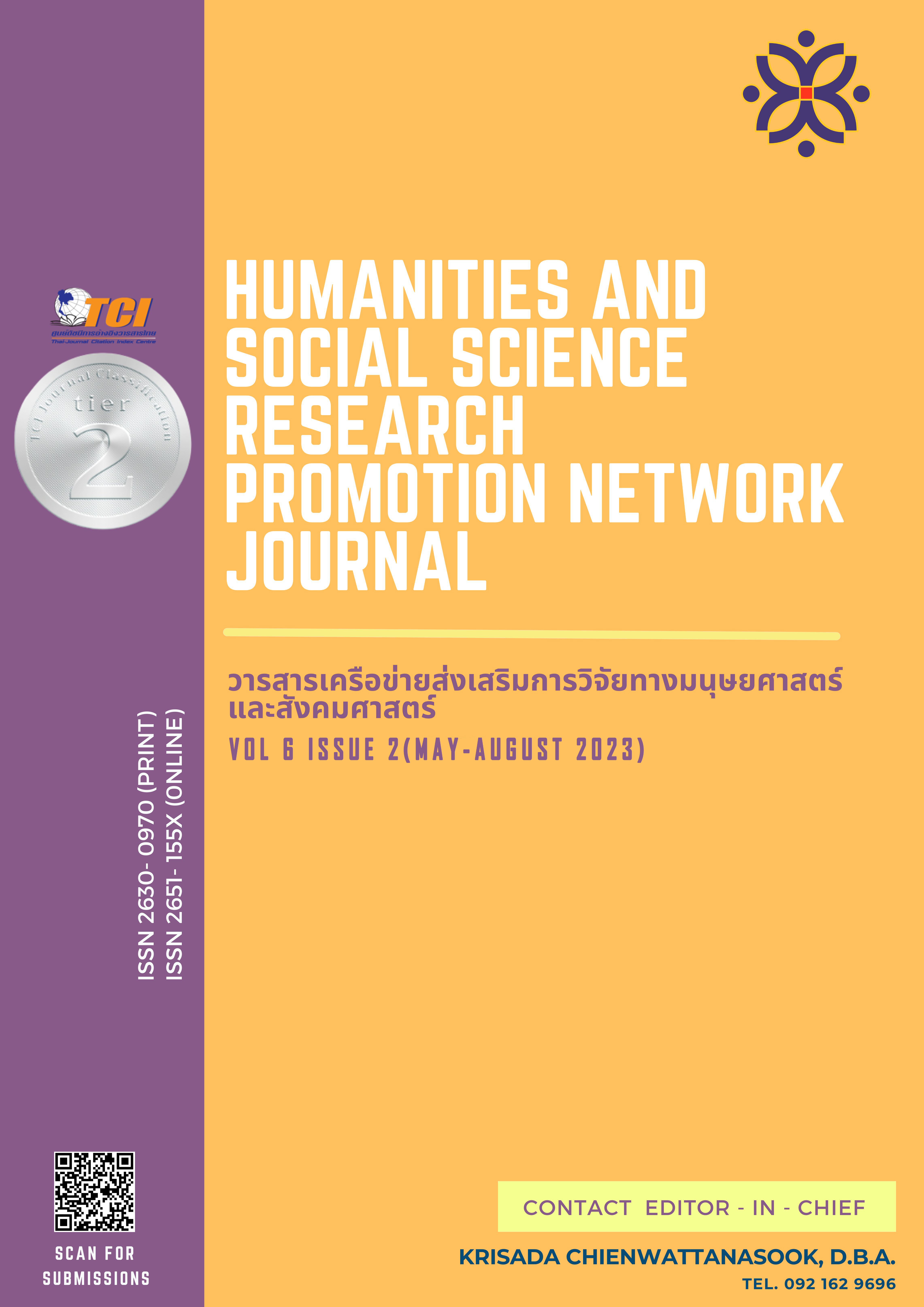HOW DOES THE STOCK MARKET REACT TO POLITICAL CHANGE?
Keywords:
Stock Market Volatility, GJR-GARCH Model, Political UncertaintyAbstract
This research scrutinizes Thailand's stock market response to shifts in the political landscape between October 1, 2013, and April 12, 2023. Employing the GJR-GARCH (1,1) model, the empirical analysis investigates stock market return volatility across five distinct subperiods preceding and following political changes. The results found that political instability in Thailand harmed the stock market volatility, suggesting that the stock market's volatility was caused by bad news more than good news captured by a significant positive gamma in the GJR-GARCH models. Therefore, during that period, the stock market experienced a downward trend in the index, resulting in negative returns.
References
Apergis, N., Mustafa, G., & Malik, S. (2022). COVID-19 pandemic, stock returns, and volatility: the role of the vaccination program in Canada. Applied Economics, 54(42), 4825-4838.
Baker, S. R., & Bloom, N. (2013). Does uncertainty reduce growth? Using disasters as natural experiments. National Bureau of Economic Research. Working Paper 19475.
Baxter, M., & Jermann, U. (1997). The international diversification puzzle is worse than you think. The American Economic Review, 87(1), 170-180.
Białkowski, J., Gottschalk, K., & Wisniewski, T. P. (2008). Stock market volatility around national elections. Journal of banking & finance, 32(9), 1941-1953.
Bollerslev, T. (1986). Generalized autoregressive conditional heteroskedasticity. Journal of econometrics, 31(3), 307-327.
Bouri, E., Naeem, M. A., Nor, S. M., Mbarki, I., & Saeed, T. (2022). Government responses to COVID-19 and industry stock returns. Economic Research-Ekonomska Istraživanja, 35(1), 1967-1990.
Buckley, R. P., Arner, D. W., Zetzsche, D. A., & Selga, E. (2019). The dark side of digital financial transformation: The new risks of fintech and the rise of techrisk. UNSW Law Research Paper(19-89).
Chau, F., Deesomsak, R., & Wang, J. (2014). Political uncertainty and stock market volatility in the Middle East and North African (MENA) countries. Journal of International Financial Markets, Institutions and Money, 28, 1-19.
Danielsson, J., Macrae, R., & Uthemann, A. (2022). Artificial intelligence and systemic risk. Journal of banking & finance, 140, 106290.
Engle, R. F., & Ng, V. K. (1993). Measuring and testing the impact of news on volatility. the Journal of Finance, 48(5), 1749-1778.
Festić, M., Kavkler, A., & Repina, S. (2011). The macroeconomic sources of systemic risk in the banking sectors of five new EU member states. Journal of banking & finance, 35(2), 310-322.
Ghani, M., Guo, Q., Ma, F., & Li, T. (2022). Forecasting Pakistan stock market volatility: Evidence from economic variables and the uncertainty index. International Review of Economics & Finance, 80, 1180-1189.
Glosten, L. R., Jagannathan, R., & Runkle, D. E. (1993). On the relation between the expected value and the volatility of the nominal excess return on stocks. the Journal of Finance, 48(5), 1779-1801.
Hartwell, C. A. (2018). The effect of political volatility on capital markets in EU accession and neighborhood countries. Journal of Economic Policy Reform, 21(4), 260-280.
Hillier, D., & Loncan, T. (2019). Political uncertainty and stock returns: Evidence from the Brazilian political crisis. Pacific-Basin Finance Journal, 54, 1-12.
Koulakiotis, A., Papapanagos, H., & Papasyriopoulos, N. (2016). Political elections, abnormal returns and stock price volatility: the case of Greece. Investment Management and Financial Innovations, 13(1-1), 161-169.
Lean, H. H., & Yeap, G. P. (2016). Asymmetric effect of political elections on stock returns and volatility in Malaysia. In Information Efficiency and Anomalies in Asian Equity Markets (pp. 246-263). Routledge.
Lin, C., & Wang, Y. (2005). An analysis of political changes on Nikkei 225 stock returns and volatilities. Annals of Economics and Finance, 6(1), 169.
Markowitz, H. M. (1952). Portfolio Selection. The Journal of Finance, 7(1), 77-91.
Nelson, D. B. (1990). ARCH models as diffusion approximations. Journal of econometrics, 45(1-2), 7-38.
Olweny, T., & Omondi, K. (2011). The effect of macro-economic factors on stock return volatility in the Nairobi stock exchange, Kenya. Economics and Finance review, 1(10), 34-48.
Sharpe, W. F. (1964). Capital asset prices: A theory of market equilibrium under conditions of risk. the Journal of Finance, 19(3), 425-442.
Tiwari, A. K., Trabelsi, N., Alqahtani, F., & Raheem, I. D. (2020). Systemic risk spillovers between crude oil and stock index returns of G7 economies: Conditional value-at-risk and marginal expected shortfall approaches. Energy Economics, 86, 104646.
Yeh, Y.-H., & Lee, T.-S. (2000). The interaction and volatility asymmetry of unexpected returns in the greater China stock markets. Global Finance Journal, 11(1-2), 129-149.
Downloads
Published
How to Cite
Issue
Section
License
Copyright (c) 2023 นรเศรษฐ ศรีธานี

This work is licensed under a Creative Commons Attribution-NonCommercial-NoDerivatives 4.0 International License.
บทความที่ได้รับการตีพิมพ์เป็นลิขสิทธิ์ของ ผู้เขียน
ทัศนะและความคิดเห็นที่ปรากฏในบทความในวารสารเครือข่ายส่งเสริมการวิจัยทางมนุษยศาสตร์และสังคมศาสตร์จะถือเป็นความรับผิดชอบของผู้เขียนบทความนั้น และไม่ถือเป็นทัศนะและความรับผิดชอบของกองบรรณาธิการ







